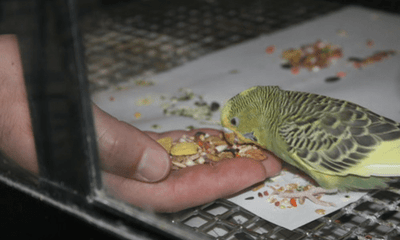Creating a peaceful, balanced aquarium is one of the most enjoyable parts of fishkeeping. Watching different species coexist harmoniously can be incredibly rewarding, but choosing the right combination of fish requires knowledge and planning. Not all fish get along, and some may see smaller tank mates as food or become territorial over space. To prevent stress, injuries, and aggression, it’s essential to choose species that share compatible temperaments, environmental needs, and diets. At Woonona Petfoods, we’re here to help you build a thriving aquarium where every fish can live happily and healthily. Here’s what you need to know about choosing tank mates that won’t fight or eat each other.
Understanding Compatibility
The first step in selecting peaceful tank mates is understanding compatibility. Fish compatibility depends on several factors, including size, temperament, water conditions, diet, and activity level. Even if two species are known to be peaceful, they might still clash if one grows too large or requires different water chemistry. As a general rule, peaceful, community-friendly fish tend to coexist well with others of similar size and nature. Aggressive or territorial fish, on the other hand, often need to be housed with species that can hold their own or be kept alone. Doing a little research before adding new fish can prevent many common issues.
Temperament and Behaviour
Fish personalities vary widely between species. Some, like tetras, guppies, and mollies, are social and thrive in groups. Others, such as bettas and cichlids, can be territorial and may attack anything that enters their space. Understanding the natural behaviour of each species helps you predict how they’ll interact in a shared tank. Schooling fish are often ideal for community aquariums. They feel secure in numbers and are less likely to bother other species. Keeping them in groups of six or more encourages natural behaviour and reduces stress.
In contrast, solitary or semi-aggressive fish should be housed with caution, they might nip fins or chase smaller tank mates. Aggression can also depend on gender and breeding behaviour. During mating periods, some fish become more territorial and protective of eggs or fry. If you plan to keep breeding pairs, consider a separate breeding tank to prevent conflict.
Size and Diet
One of the golden rules of fishkeeping is to avoid housing fish that can fit inside another’s mouth. Predatory behaviour is instinctive, and even peaceful species may eat smaller fish if the opportunity arises. Always choose tank mates that are of similar size or too large to be mistaken for food.
Diet also plays an important role in compatibility. Herbivorous, omnivorous, and carnivorous fish have different feeding habits. Keeping fish with drastically different diets can lead to competition, stress, and overfeeding. For example, slow eaters like angelfish may struggle to get enough food when housed with fast, greedy feeders such as barbs or danios. Ensuring all fish have access to appropriate food types, flakes, pellets, frozen, or live food, will keep everyone healthy and reduce tension during feeding times.
Water Conditions and Habitat
Different fish thrive in different environments, and matching species that share similar water parameters is essential. Temperature, pH, hardness, and salinity should be compatible across all tank inhabitants. Mixing tropical fish with cold-water species, for example, can cause stress and illness for both groups.
Equally important is habitat preference. Some fish are bottom dwellers, others prefer the middle or surface of the tank. By selecting fish that occupy different levels, you can make full use of your aquarium space while reducing competition. Bottom feeders like corydoras or loaches pair well with mid-level swimmers such as tetras, and surface dwellers like guppies or gouramis. Providing plenty of hiding spots, caves, plants, and décor also helps prevent conflict. Fish need territories and safe areas to retreat to. When they feel secure, aggression naturally decreases.
Popular Peaceful Combinations
If you’re setting up a community tank, there are many tried-and-true combinations that tend to work well together. Here are a few examples of peaceful groups:
-
Guppies, mollies, platies, and swordtails: Colourful, hardy, and social, these livebearers thrive in groups and are easy to care for
-
Neon tetras, rasboras, and corydoras: Ideal for beginners, these small schooling fish coexist peacefully and enjoy similar water conditions
-
Gouramis, barbs, and rainbowfish: With enough space, these mid-sized species can live harmoniously in a well-planted aquarium
-
Dwarf cichlids with tetras and catfish: Some smaller cichlids, like Apistogramma or Bolivian rams, can be kept successfully in peaceful communities if provided with territory and hiding spots.
Always research individual species before purchase, as variations in temperament can occur even within the same family of fish.
Avoiding Common Mistakes
One of the most common mistakes in fishkeeping is overcrowding. Too many fish in one tank can lead to poor water quality, increased stress, and territorial aggression. Always follow the general guideline of one inch of fish per litre of water (adjusting for body shape and species needs). A spacious tank with good filtration is the key to a calm and healthy environment.
Another frequent issue is introducing new fish too quickly. Each addition changes the social balance of the tank. Quarantine new fish for at least two weeks before adding them to your main aquarium to prevent disease. Introduce them gradually and observe interactions closely for signs of aggression or stress. Feeding can also trigger conflict. Aggressive eaters often dominate during feeding time, leaving others hungry. Spread food across the tank or use sinking pellets for bottom dwellers to ensure all fish have equal access.
Signs of Trouble
Even with careful planning, some fish simply don’t get along. Watch for warning signs such as chasing, nipping, torn fins, or hiding for long periods. If aggression continues, rearrange the tank layout to disrupt established territories or provide additional hiding spaces. In severe cases, separate the aggressive fish into another tank. Monitoring your aquarium daily helps you spot problems early. Healthy, content fish will swim confidently, show bright colours, and eat regularly.
Creating a Peaceful Aquarium
A harmonious aquarium doesn’t happen by chance, it’s the result of thoughtful planning, balanced stocking, and attentive care. Choose species based on compatibility rather than appearance alone, and prioritise the comfort and safety of your fish over the desire for variety. Regular maintenance also plays a huge role in maintaining peace. Clean water, stable conditions, and consistent feeding routines keep stress levels low, reducing the likelihood of aggression. A well-cared-for tank promotes healthy, calm fish that are more likely to coexist peacefully.
Choosing the right tank mates is one of the most important parts of building a successful aquarium. By researching each species’ temperament, size, diet, and habitat needs, you can create a balanced community where every fish thrives. Remember, not all fish are meant to live together, and sometimes a simpler combination leads to a happier, healthier tank.
At Woonona Petfoods, we’re passionate about helping fishkeepers build thriving aquatic environments. Our knowledgeable team can help you select compatible fish species, recommend the best food and water treatments, and guide you on aquarium setup and maintenance. Visit us in-store to explore our wide range of fish supplies and expert advice to keep your aquarium peaceful and full of life.






